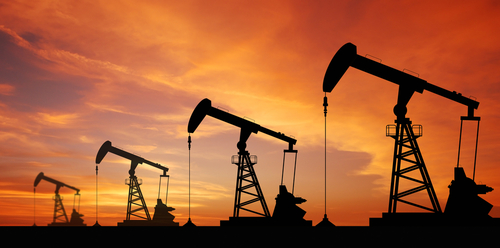What Is A ‘Fair’ Price For Oil?
Last week, oil prices hit their highest level since late 2014 on the back of continued global and U.S. stockpile drawdowns and expectations that oil demand growth will stay strong this year.
Analysts and officials are once again trying to predict what a ‘fair’ price for oil is – a prediction that must take into account the summer driving season, the possibility of new sanctions on Iran, elections in Venezuela and Iraq, continuous OPEC chatter about “mission accomplished or not”, and reports of OPEC kingpin Saudi Arabia aiming for oil prices of $80 to $100 a barrel.
Some analysts and officials believe that oil prices could hit $80 this year, although such a price would probably be due to the geopolitical risk premium rather than market fundamentals.
Even if oil prices were to rise to $80, such an increase would be short-lived, and would be mostly fueled by fears of a supply disruption, especially in the Middle East with possible new sanctions on Iranian oil and with tenser situations in and around Syria and Yemen. Then there’s Venezuela, with its oil production plummeting and elections expected to be held in May—and if the U.S. were to slap further sanctions on Venezuela, such as on its oil industry, it would be yet another wild card for oil prices later this year.
Yet, around $75 oil is as good as it’s going to get in the short term, according to some investment banks and oil officials. No one is predicting oil at $100 yet.
“I think $65 to $75 is more realistic numbers for the rest of the year, but there are so many factors that can change that,” Mohammed bin Hamad Al Rumhi, the oil minister of non-OPEC participant in the production cut deal, Oman, told CNBC.
“In my opinion, where we are is not too bad and we can live with it. That’s $65 to $75, give or take, for the foreseeable future,” said the minister.
According to Alexander Novak, the Energy Minister of the non-OPEC leader in the pact—Russia—oil prices could reach $80 a barrel as early as this month, although such a price would not be justified by market fundamentals, but by geopolitical concerns.
Bank of America Merrill Lynch and Goldman Sachs, for example, expect oil prices to hit $80 this year, with BofA Merrill Lynch expecting this to happen this quarter, due to some bottlenecks emerging in the Permian that could slow down the growth pace.
Goldman Sachs sees strong oil demand growth in 2018, with its 2018 year on year growth estimate at 1.85 million bpd. The first quarter that has just ended is likely to have posted the strongest annual growth since the fourth quarter of 2010, according to Goldman.
Barclays sees upside pressure on oil prices this quarter, but expects the price of oil will go into correction in the second half of 2018 due to surging U.S. production, overrated concerns over renewed Iran sanctions, and Venezuela production drops, which are already priced in.
Yet, the upside pressure of geopolitical concerns amid the tightest market in years could tip the scales into oversupply again, as higher oil prices would encourage more U.S. shale areas to pump at profit, and could also weigh on demand growth.
But U.S. shale faces “production challenges”, the largest oilfield services provider Schlumberger said on Friday. Those challenges could slow the growth pace of the U.S. supply.
“However, production challenges in US shale are emerging that are linked to infill drilling well-to-well interference, the potential lower production of step-out drilling from Tier 1 acreage, and significant infrastructure constraints,” chairman and CEO Paal Kibsgaard said in the Q1 results release.
On the demand side, the higher the price of oil, the higher the gas price at the pump. This summer, drivers in the U.S. will pay an average of $2.74 per gallon of regular gasoline, 11 percent more than last summer, the EIA says. These prices are expected to be the highest average gas prices in four years, largely reflecting changes in crude oil prices, the EIA has estimated.
At a theoretical $100 a barrel Brent—a level that Saudi Arabia would reportedly love to see—demand growth would be seriously affected.
The uptick in oil prices could lead to a slight drop in demand, Total CEO Patrick Pouyanne warned last week.

